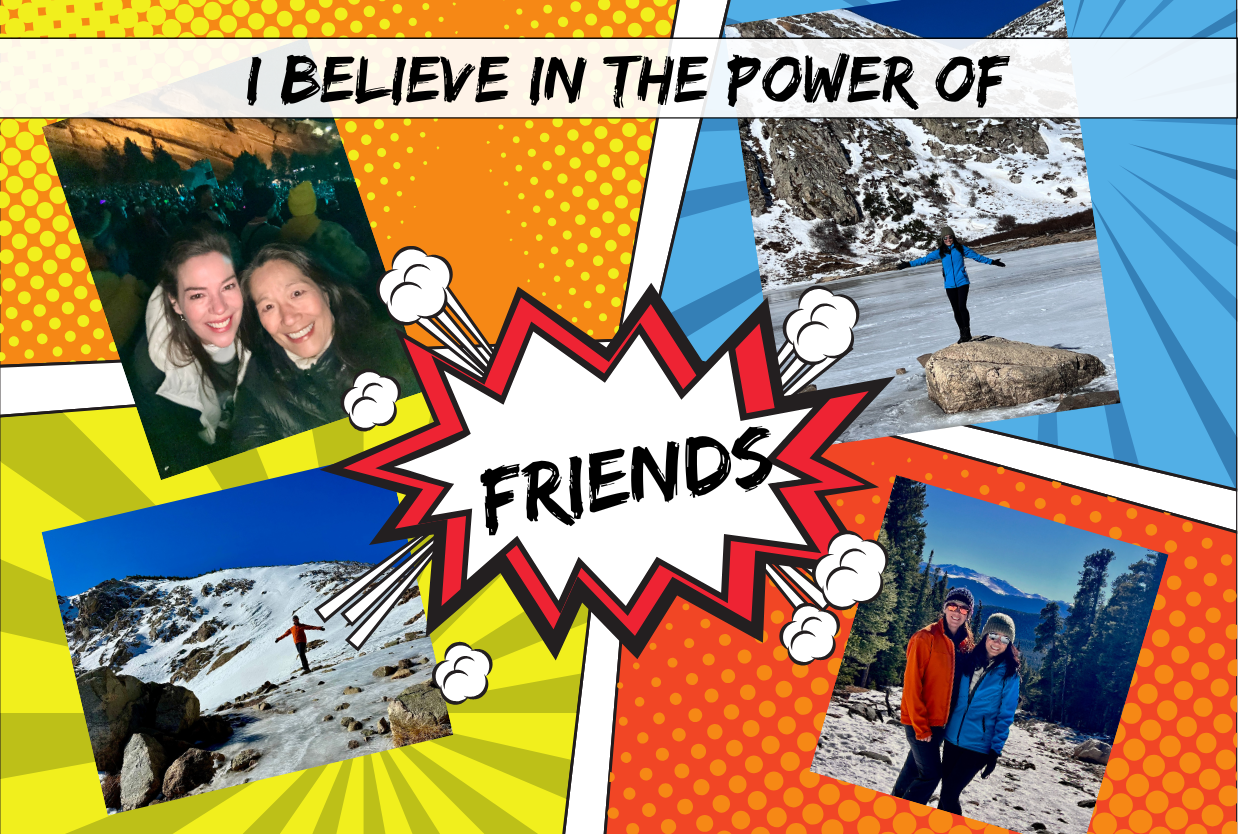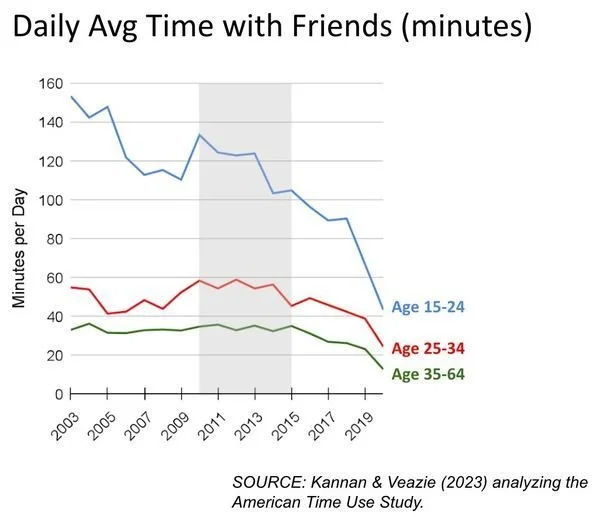Enhancing Work-Life Integration: The Secret Weapon? Your Friends!
In the relentless pursuit of success, entrepreneurs and driven professionals often find themselves ensnared in a web of deadlines and stress. However, the ultimate productivity hack might not be found in your work strategy but rather at a leisurely brunch with friends or an impromptu weekend adventure. Discover how nurturing friendships outside the office can be the key to reducing workplace stress and enhancing work-life integration.
Stress-Busting Superpower: Emotional Support
Imagine a stress-relief sanctuary, where laughter is abundant and judgment is absent. Friends offer this respite, enabling you to transform overwhelming stress into manageable conversations. This interaction not only lowers your stress levels but also gives your mind a much-needed reboot. Incorporating regular socializing into your life can significantly bolster your mental health and productivity.
Case in point: I recently took a break from my normal routine to immerse myself in a long weekend with a college girlfriend. Living near Red Rocks Amphitheater gives me a great excuse to host friends for concerts I would never have attended otherwise. This time it was Tiesto, an Electronic Dance Music (EDM) DJ that has amassed a large fan base and a net worth of $30 million. His heart-pumping sets are not everyone’s favorite jam, but I am a huge fan of keeping an open mind to novel experiences.
It was the night of a new moon, and the lights of Denver backlit the stage. The concert goers were in faux fur tricked out with fairy lights and costumes that were almost as fun as the light show on stage. Cardio dance is one of my favorite ways to exercise and between the hike up to the venue and four hours of dancing to the beat, I definitely grew more brain cells. Thanks to a well-designed pair of concert earplugs, I didn’t lose any hearing either. The night was electric in a natural setting, and I truly enjoyed the experience.
We incorporated two additional hikes, in pure nature this time, along a river and up to a glacier. We cooked brain healthy bison and black bean chili with cacao, tossed persimmon and arugula salad while we caught up, commiserated, delighted in each other’s wins and did some planning for future adventures.
(Canva design, photos by author)
Mood Elevation: Inject Positivity into Your Work
Who doesn’t crave a mood lift during a demanding workweek? Engaging with friends acts as a natural serotonin and dopamine booster. These neurotransmitters are pivotal in sharpening focus and enhancing workplace productivity. The laughter and bonding you experience with friends are scientifically proven to reduce cortisol, the stress hormone, flooding your system with endorphins. The positive energy you gain seamlessly translates into improved job performance and workplace happiness.
Masterclass in Resilience: Strength in Social Numbers
With work challenges lurking around every corner, conversations with friends provide innovative solutions and fresh perspectives. Your social network is more than just a circle of camaraderie; it’s a resilience powerhouse that fortifies you against setbacks. These bonds are vital for workplace well-being and personal growth, enhancing your ability to cope with stress.
Seamless Work-Life Integration: Craft a Balanced Lifestyle
Is work-life integration really achievable? I believe it’s possible. Consider your friendships as the blueprint for creating a harmonious lifestyle where professional and personal realms coexist.
I came across this chart, in a post by Cory Long ,which prompted me to look deeper into this research and think about the role of friendships in our lives.
Humans are inherently a social species and our ability to cooperate has been a major adaptive advantage. Our time together has been diminishing drastically, however. Remote interactions and time on technology has skyrocketed. Meanwhile technology innovations have provided automation and workplace flexibility, global mental health has also plummeted. Mental health is a complicated topic with many variables in play, but the increase in social isolation is well established across every age group, increasing substantially after age 45 in a trend that leaps every decade.
Those who work 50-100 hours per week report the lowest social isolation, but have the least time spent in social engagement with family (household and non-household), friends, and companionship. The average time spent with friends from 2003-2020 has universally dipped across every age, gender, ethnicity, and income level.
The nature of friendships has transformed with social media in ways that many demonize, which is honestly fair. But in the interest of fairness, social media has also allowed me to stay connected with friends and friends far and wide as I moved across many time zones. I celebrate their birthdays, accomplishments, and the journey of their lives in a way that would have been impossible a few decades ago. And yet, it pales in comparison to the richness of in-person interaction.
Each of us has a range of need for interaction. For those who are more introverted or have neurodiversity, in-person interaction can be overwhelming. The Internet has provided a filter with which they can moderate the intensity. But even the neurodiverse need human interaction, even though it may be more difficult terrain for them to traverse. The bottom line is that we do not live in a vacuum and need to learn how to work with other humans successfully to thrive.
Regular social engagements help you set boundaries, promoting a healthy work-life integration. Embrace the rich identity beyond just being a professional—be a friend, a partner, a creator. Friendships remind you of these multifaceted identities, enriching your personal and professional life alike.
Indirect Benefits: Beyond the Social Connection
Here's a bonus tip for entrepreneurs and busy professionals. While lowered stress levels and improved mood lead to heightened productivity and job satisfaction, it doesn’t stop there.
Your social interactions refine your communication and teamwork skills, which are invaluable in any business setting (not to mention home life).
Practical Tips for Incorporating Friendships into Your Busy Routine
Schedule Regular Meet-ups: Make socializing a priority by scheduling monthly dinners or weekly coffee dates, ensuring you stay connected with friends.
Combine Activities for Dual Benefits: Mix fitness with friendship by working out together or catching up during lunch breaks, aligning wellness with camaraderie. Take a hike on a weekend and ponder answers to life as you sit on a rock with a glacial lake below. (I recommend St. Mary’s Glacier in Colorado for a short, heart-pumping jaunt)
Leverage Technology: Use video calls, phone calls, and chat groups to maintain strong connections when in-person meetings aren't feasible. Being intentional about this builds relationships. Viveka Von Rosen calls this “Peopling.” She has built several successful businesses and a vibrant network with her contagious smile and ability to authentically connect with humor and authenticity.
Transform Commutes into Social Time: Share rides with friends or plan joint public transit commutes to make travel time enjoyable and productive. Few things bond relationships like a fun road trip.
Blend Socializing with Routine Tasks: Invite friends on errands or host meal-prep parties, turning chores into fun social sessions. Each time we gather I try new recipes with friends in a much more rewarding manner than scouring cook books. Pitching in to do the repetitive and mindless tasks is a great opportunity to brainstorm, vent, joke, and share insights.
Maximize Weekends and Holidays: Plan weekend adventures or brief after-work gatherings to keep relationships vibrant and rewarding. For the last ten years, a group of us have been planning a ski trip to a new destination. The next two will be Whistler, British Columbia, followed by the Dolomites in Italy. I never regret these trips, and can honestly say they were excellent stress busters through a few extremely tough times.
Stay Flexible and Open: Embrace spontaneous outings and relish in short, meaningful interactions that fit your schedule seamlessly.
Incorporate these social strategies to enhance your work-life integration. Embrace the joy, support, and connection that friends provide, transforming not just your career but your overall happiness. Here's to friendships—your secret weapon in the quest for a balanced, fulfilling life!
Please share with friends! Who knows what adventure you can cook up next.
Source:
Kannan VD, Veazie PJ. US trends in social isolation, social engagement, and companionship ⎯ nationally and by age, sex, race/ethnicity, family income, and work hours, 2003-2020. SSM Popul Health. 2022 Dec 25;21:101331. doi: 10.1016/j.ssmph.2022.101331. PMID: 36618547; PMCID: PMC9811250. https://pubmed.ncbi.nlm.nih.gov/36618547/



